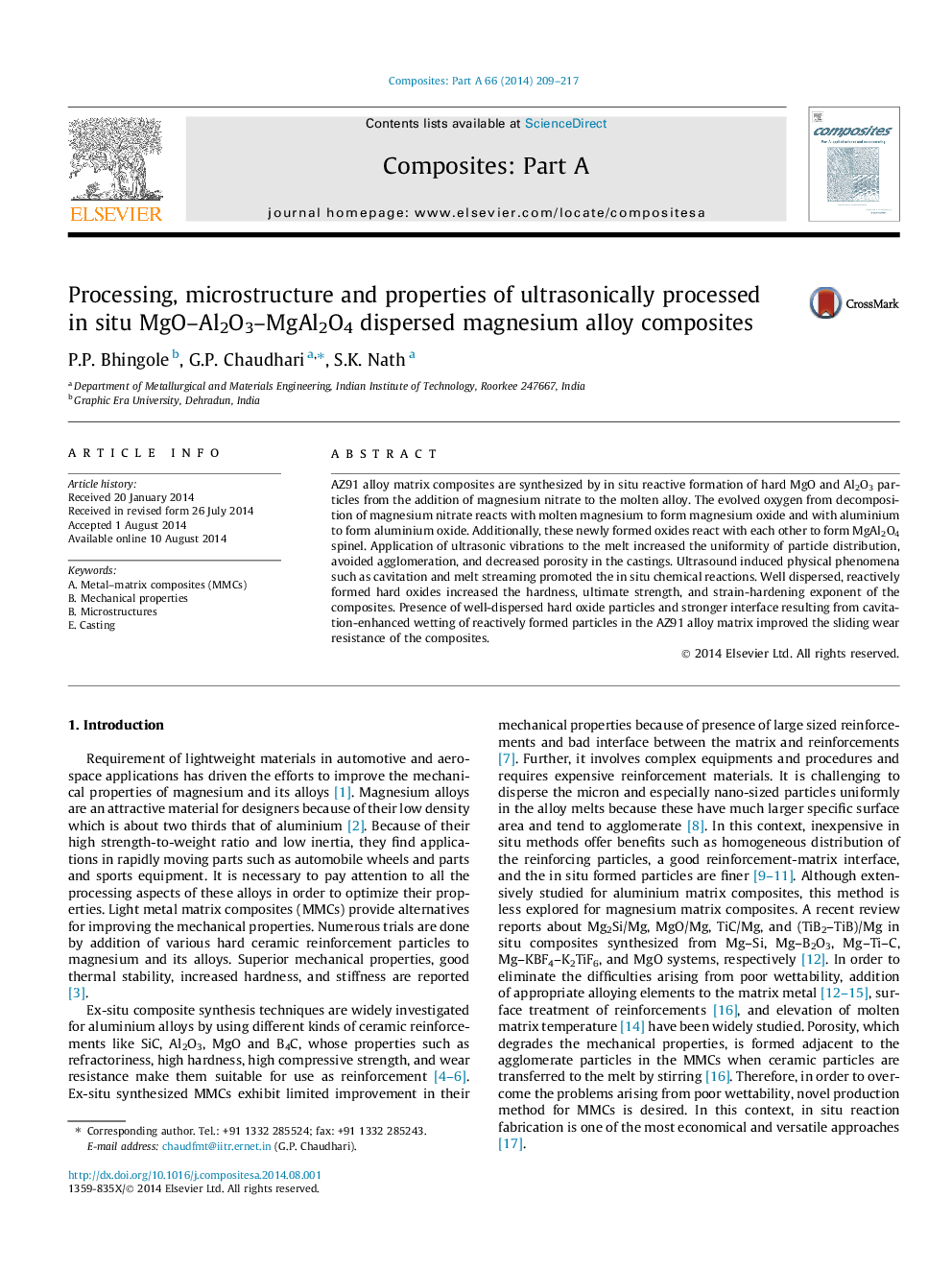| Article ID | Journal | Published Year | Pages | File Type |
|---|---|---|---|---|
| 1465969 | Composites Part A: Applied Science and Manufacturing | 2014 | 9 Pages |
AZ91 alloy matrix composites are synthesized by in situ reactive formation of hard MgO and Al2O3 particles from the addition of magnesium nitrate to the molten alloy. The evolved oxygen from decomposition of magnesium nitrate reacts with molten magnesium to form magnesium oxide and with aluminium to form aluminium oxide. Additionally, these newly formed oxides react with each other to form MgAl2O4 spinel. Application of ultrasonic vibrations to the melt increased the uniformity of particle distribution, avoided agglomeration, and decreased porosity in the castings. Ultrasound induced physical phenomena such as cavitation and melt streaming promoted the in situ chemical reactions. Well dispersed, reactively formed hard oxides increased the hardness, ultimate strength, and strain-hardening exponent of the composites. Presence of well-dispersed hard oxide particles and stronger interface resulting from cavitation-enhanced wetting of reactively formed particles in the AZ91 alloy matrix improved the sliding wear resistance of the composites.
